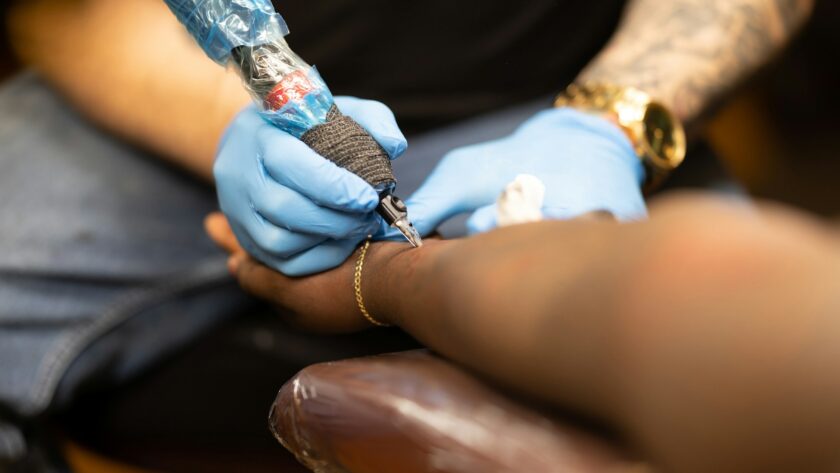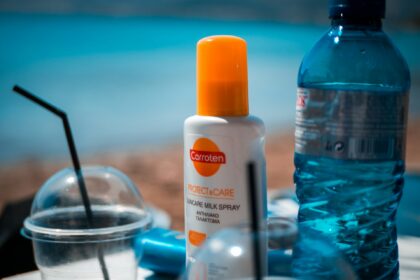Getting a new tattoo is more than just a quick trip to the studio—it’s a journey that extends well beyond the moment the needle stops buzzing. Your tattoo is a permanent piece of art that requires diligent aftercare to ensure it heals beautifully and lasts a lifetime. Among the most critical aspects of this aftercare is knowing when and how to use lotion on your new tattoo.
As you might imagine, applying lotion too soon or choosing the wrong product can have adverse effects, potentially compromising the healing process and the appearance of your ink. So, when exactly should you start moisturizing your new tattoo, and what are the best practices to follow?
This guide will answer all those questions, offering you a clear and detailed roadmap for using lotion to maintain the vibrancy and health of your tattoo. Whether you’re a first-timer or a seasoned ink enthusiast, understanding this crucial step in tattoo care will help you preserve your body art for years to come.
Understanding the Tattoo Healing Process
Your tattoo’s healing journey is a delicate process, unfolding over several weeks and requiring careful attention. In the first few days after getting inked, your skin goes through an initial healing stage, where redness, swelling, and a thin layer of plasma protect the fresh tattoo. During this time, your tattoo may look shiny and feel tender, as your body works to ward off infections and begin the repair process.
The second stage, typically beginning around day four, involves peeling and scabbing. This is when your tattoo starts to flake as the outer layer of skin regenerates. While it might be tempting to pick at the peeling skin, resist the urge, as doing so can disrupt the ink and lead to patchy healing.
Finally, by days 15 to 30, your tattoo enters its final healing stage. The skin might still be a bit dry, but the scabs will have fallen off, and your tattoo will begin to settle into its permanent form. Understanding these stages is key to knowing when and how to start using lotion on your tattoo.
When to Start Using Lotion
Timing is everything when it comes to moisturizing your new tattoo. You don’t want to jump the gun and start applying lotion too early, as this can trap moisture and bacteria against the skin, potentially leading to infection.
The ideal time to begin using lotion is typically around day three or four, once your tattoo has started to dry out and the initial plasma layer has subsided. At this point, your tattoo might feel tight, itchy, or dry—these are clear signs that it’s time to introduce a gentle, fragrance-free lotion into your aftercare routine.
Begin by applying a thin layer of lotion after gently cleaning your tattoo, ensuring that the skin is completely dry before moisturizing. Opt for products specifically designed for tattoo aftercare, as these are formulated to support healing without clogging pores or irritating sensitive skin. By starting your lotion regimen at the right time, you can keep your tattoo hydrated, reduce itching, and promote even healing.
How to Apply Lotion to a New Tattoo
Applying lotion to a new tattoo might seem straightforward, but there’s a method to ensure you’re doing it correctly. First, always start by gently washing your tattoo with a mild, unscented soap and lukewarm water. Pat the area dry with a clean towel—never rub, as this can irritate the sensitive skin.
Once your tattoo is dry, it’s time to apply the lotion. Use a small, pea-sized amount and gently rub it into the tattooed area using clean hands. The goal is to apply a thin, even layer that hydrates the skin without leaving it greasy or sticky. Over-moisturizing can suffocate the tattoo, leading to clogged pores or, worse, infection. You should reapply lotion two to three times a day, or whenever your tattoo feels particularly dry or tight.
Remember, consistency is key—properly moisturized skin heals more efficiently, helping to preserve the vibrancy and clarity of your tattoo.
Benefits of Using Lotion on a New Tattoo
Moisturizing your new tattoo isn’t just about comfort—it’s an essential part of the healing process that offers several benefits. The most immediate benefit is hydration; applying lotion keeps the skin soft and supple, reducing the risk of cracking, which can distort the tattoo.
Proper hydration also minimizes itching, a common issue during the healing process that, if not managed, can lead to scratching and potential damage to the tattoo. Furthermore, keeping your tattoo moisturized helps prevent over-scabbing, which can occur if the skin dries out too much. Overly thick or hard scabs can pull at the ink, leading to patchy healing and faded areas in the tattoo.
In the long term, regularly moisturizing your tattoo helps maintain the skin’s elasticity, ensuring that your tattoo ages well, with colors remaining vibrant and lines sharp. By incorporating lotion into your aftercare routine, you’re not just treating your skin—you’re safeguarding your tattoo’s longevity.
What Happens If You Don’t Use Lotion
Skipping lotion during your tattoo’s healing process can lead to several issues, some of which can permanently affect the appearance of your ink. Without proper hydration, your skin can become excessively dry, leading to more pronounced scabbing and cracking.
When the skin cracks, it can disrupt the ink beneath, causing areas of your tattoo to heal unevenly or fade prematurely. Dry skin also tends to itch more, increasing the temptation to scratch, which can further damage the tattoo and introduce bacteria, leading to infection. Additionally, failing to keep the skin moisturized may result in complications like a tattoo ink sack, where excess plasma and ink collect under the skin, affecting the healing process. Moreover, neglecting to moisturize can result in a dull, lackluster tattoo, as the skin over the ink struggles to regenerate properly
While your tattoo might eventually heal, it won’t look as vibrant or crisp as it could have with proper care. In the long run, failing to use lotion can compromise the longevity of your tattoo, necessitating touch-ups or even more extensive corrective work down the line.
Frequently Asked Questions
Can I use any lotion on my new tattoo?
Not all lotions are suitable for a new tattoo. It’s crucial to choose a lotion that is fragrance-free, hypoallergenic, and designed for sensitive skin. Avoid lotions that contain alcohol, artificial fragrances, or petroleum-based ingredients, as these can irritate the skin or clog pores, hindering the healing process.
How often should I apply lotion to my healing tattoo?
You should apply lotion to your new tattoo two to three times a day, or whenever the skin feels particularly dry or tight. Consistency is key—regular application ensures that your tattoo stays hydrated, which is essential for proper healing and maintaining the tattoo’s appearance.
What should I do if my tattoo feels too dry or itchy?
If your tattoo feels dry or itchy, it’s likely a sign that it needs more moisture. Ensure you’re applying lotion as directed, and consider using a cool, clean compress to soothe any intense itching. Avoid scratching or picking at your tattoo, as this can lead to scarring or infection.
Final Words
Proper aftercare is vital to ensuring your tattoo heals beautifully and retains its vibrant appearance for years to come. Knowing when and how to apply lotion to your new tattoo can make all the difference in how well it heals and how it ultimately looks. By starting your moisturizing routine at the right time, choosing the right products, and applying lotion correctly, you’re not only soothing your skin but also preserving the integrity of your ink. Remember, your tattoo is a lifelong commitment, and the care you give it in the first few weeks can set the stage for how it looks for years to come. Take the time to follow these aftercare guidelines, and your tattoo will reward you with enduring beauty and significance.





